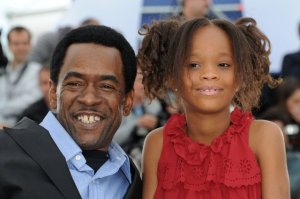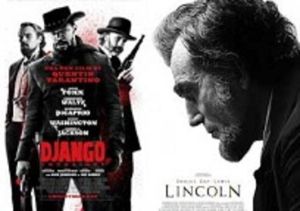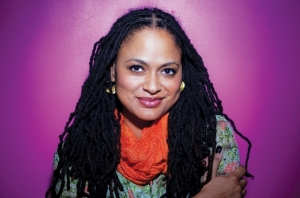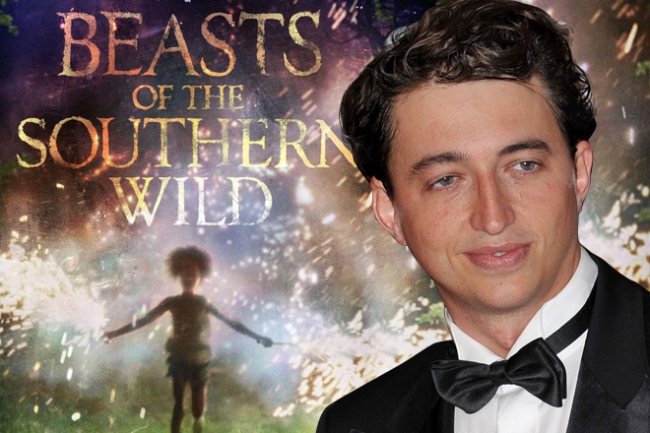
Yesterday—instead of watching the Superbowl—I went to see Beasts of the Southern Wild. I know… I’m late.
When I saw the trailer last spring, I decided I wasn’t going to see the film for a couple of reasons:
1. White folks telling their story through characters of color rarely goes over well.
2. The title itself confirmed point number 1: Since when is it okay to use “Beasts” synonymously to Black (or any) characters of a film? I don’t care about the universal meaning of “beasts” in this movie, and I don’t care about anyone’s metaphorical reading of the title—it still doesn’t sit right with me.
So, I guess the question may be, why did I go to see it? My best friend is having an Oscar’s party, and in an effort to be spirited on the occasion, I’m seeing most, if not all, of the movies nominated for the “Best Film” category. I’m admittedly a snob when it comes to film preferences (I’m more of a documentary/ independent/foreign film kinda gal), but I’m attempting open-mindedness by seeing films the Academy views as “prolific.” To resist the feeling that I’m wasting my time, I’m also considering how many people of color are featured in each film, and what roles they get to play. In other words, 30 years from now, if someone was to analyze American society in 2012, what would our most “notarized” films tell them about how we depict race and people of color?
This brings me to Beasts of the Southern Wild– a film adapted from the play Juicy and Delicious (still a weird title, but I prefer it to Beasts) by Lucy Alibar, who is also childhood friends with the film’s director, Behn Zeitlin. The play was written in attempts for Alibar to make sense of her tumultuous relationship with her dying father. She, like her director-friend are white, but the protagonist, Hushpuppy (Quvenzhané Wallis), and Hushpuppy’s scary father, Wink (Dwight Henry), are Black. This isn’t supposed to matter, right? Especially since we’re living in a “post-race America”? But let’s pause for a second, and imagine the conversation that must have taken place to choose Black actors as the main characters. What was said? What was the reasoning behind this choice? What emotions were they trying to evoke from the audience by choosing Black characters, rather than white, Asian, Latino, or even an interracial father/daughter pairing?
Race, of course, isn’t brought up in the film—why would it, when this film is about so much more than race? It’s about survival, strength, the reclaiming of agency, as well as the politics of home. As one reviewer points out, the main characters could have been played by white actors, and the story still would have been powerful.
But they weren’t, and that means something.
For me, the absent mother, and lunatic, alcoholic father reminds me of the perpetual tale of the fallen Black family. Wink’s inability to express love to his daughter, who he projects tall-tale-lessons of masculinity onto, reminds me of the assumptions that Black men cannot “daddy” their children. His screams and roars, and desperation for alcohol reminds me of the scary-Black-man the media has always wanted me to see. Wink terrifies me; I want Hushpuppy to be rid of him.
And Hushpuppy… poor, little Hushpuppy—motherless, might-as-well-be -fatherless, and too-often trouser-less, reminds me of all America’s children of color, who, we are told, are not properly parented. We are to feel sorry for her, but mostly I am angry. I am angry when she appears on screen with only her panties. I feel violated by witnessing this child’s violation. I’m irritated with her hair. I can’t help but imagine the film’s creators thinking that her hair—reminiscent of my own—would give an added wild, beastly, quality.
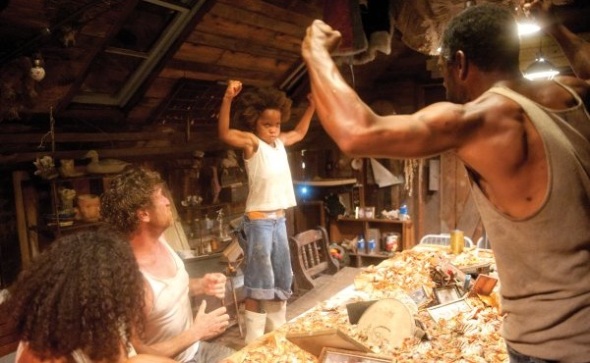
But mostly, I’m pissed off at how strong she is, yet I know I’m supposed to applaud her strength. Hushpuppy is a child—but she, like many Black and brown children in real life—is expected to be emotionally, mentally and even physically stronger than adults. In bell hooks’ critique of the film, she writes that Hushpuppy is “a miniature version of the ‘strong black female matriarch.’” We are made to believe that although she lives in poverty, and has not been properly parented, she’s so strong, that she can fiercely survive without the love and care she deserves and needs. While we see Hushpuppy console animals, white children, her father, she, herself, is not consoled-though, at one point, held—not consoled. She is too strong for this act of human kindness; we are to accept that she doesn’t need it; she will survive; she is super-beast-child; she even confidently confronts a beast!
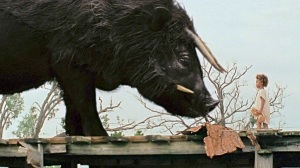
But this film is about so much more than race! It’s about survival, strength, the reclaiming of agency, as well as the politics of home. As one reviewer pointed out, the main characters could have been played by white actors, and the story still would have been powerful.
But they weren’t, and that means something.
** Disclaimer: While I find the film’s casting decisions problematic, I do not want to take away from the fact that both Quevenzhane Wallis and Dwight Henry do a remarkable job portraying their characters. I hope they both (though Dwight Henry did not choose acting; this role chose him) have the opportunity to showcase their talents that go beyond stereotypes projected onto them, and their (our) community.



